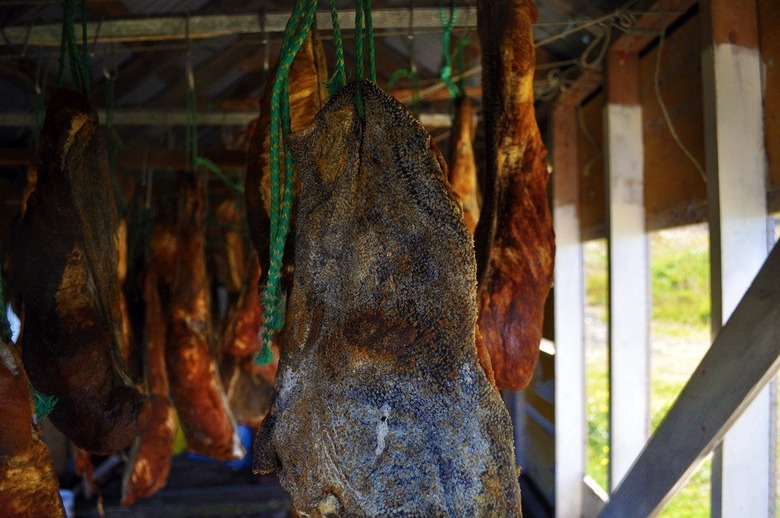What Do They Eat In Iceland? It Starts With Shark And Gets Weirder
When most people think of Iceland, the cuisine isn't the first cultural aspect to come to mind. Instead, most think of the Northern lights, whale watching, and bathing in the famous Blue Lagoon. But the fact is that 80 percent of Iceland's economy stems from the food industry. Iceland is known for exporting quality lamb, lobster, whitefish, and skyr (a dairy product similar to yogurt).
Lamb, potatoes, and extensive amounts of seafood are all staples of Icelandic cuisine. Cod, haddock, herring, lobster, and salmon are popular, and minke whale is available seared and on kebabs. Another favorite in this northern European country is skyr, which is technically a soft cheese and used for breakfast, lunch, dinner, or as a dip. The iconic Icelandic hotdog, pylsa, is made with lamb and typically served with ketchup, sweet brown mustard, onions, and a sauce made with mayonnaise and relish called remoulade.
Some other prevalent Icelandic dishes aren't appetizing to every foreigner – these include hákarl, or cured shark. It's buried underground for six to 12 weeks, then hung up and fermented for four to five months. Quora user and Icelandic resident Timothy Bishop describes the smell as "fishy, fetid lavatory cleaner," and he says the taste is like an incredibly bitter cheese. Wash the unique dish down with Brennivín, or Icelandic schnapps nicknamed "black death," which traditionally accompanies a serving of fermented shark. Other dishes available in Iceland include horse, ram's testicles, and singed and boiled sheep's head – which is usually served with potatoes and mashed turnips.
